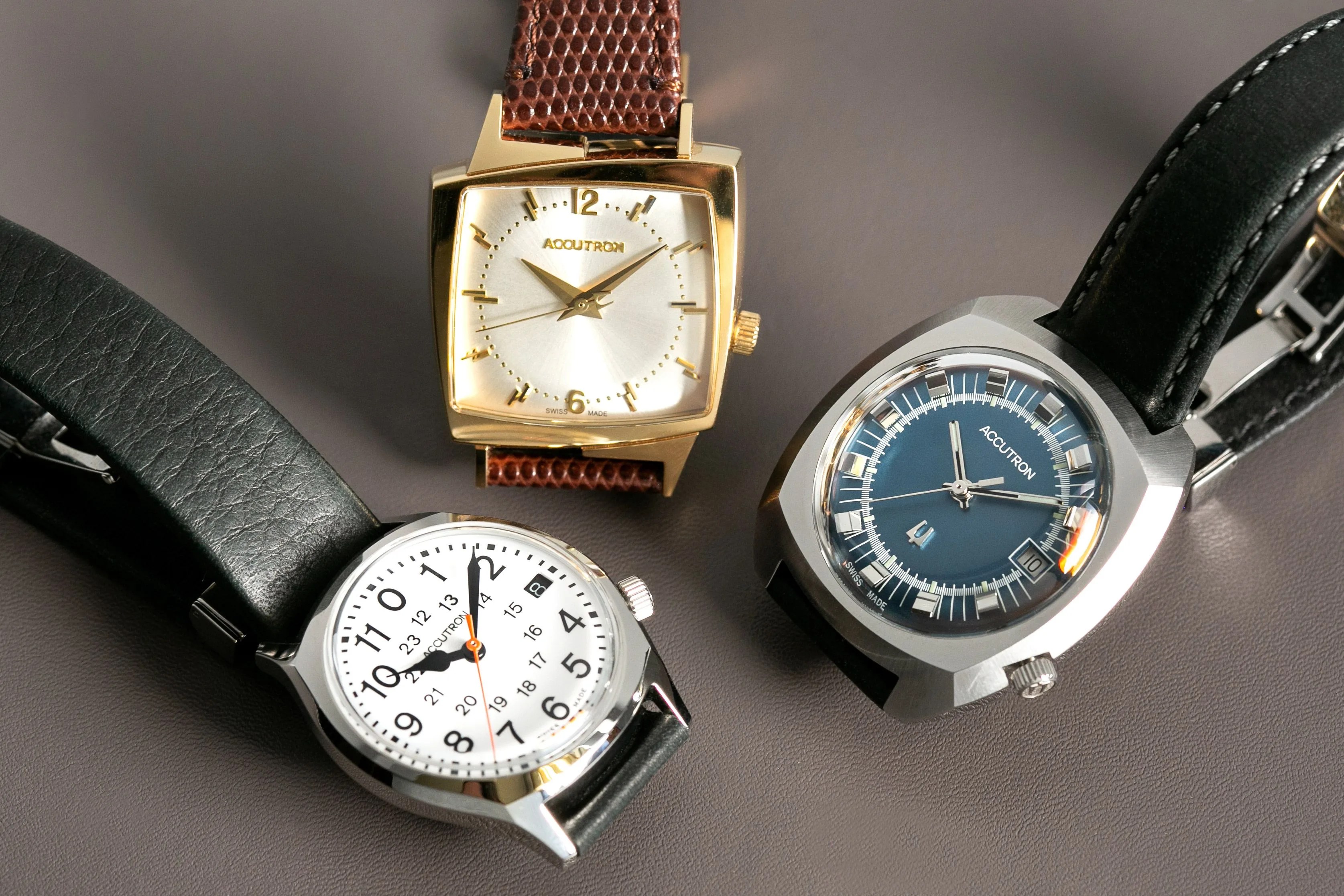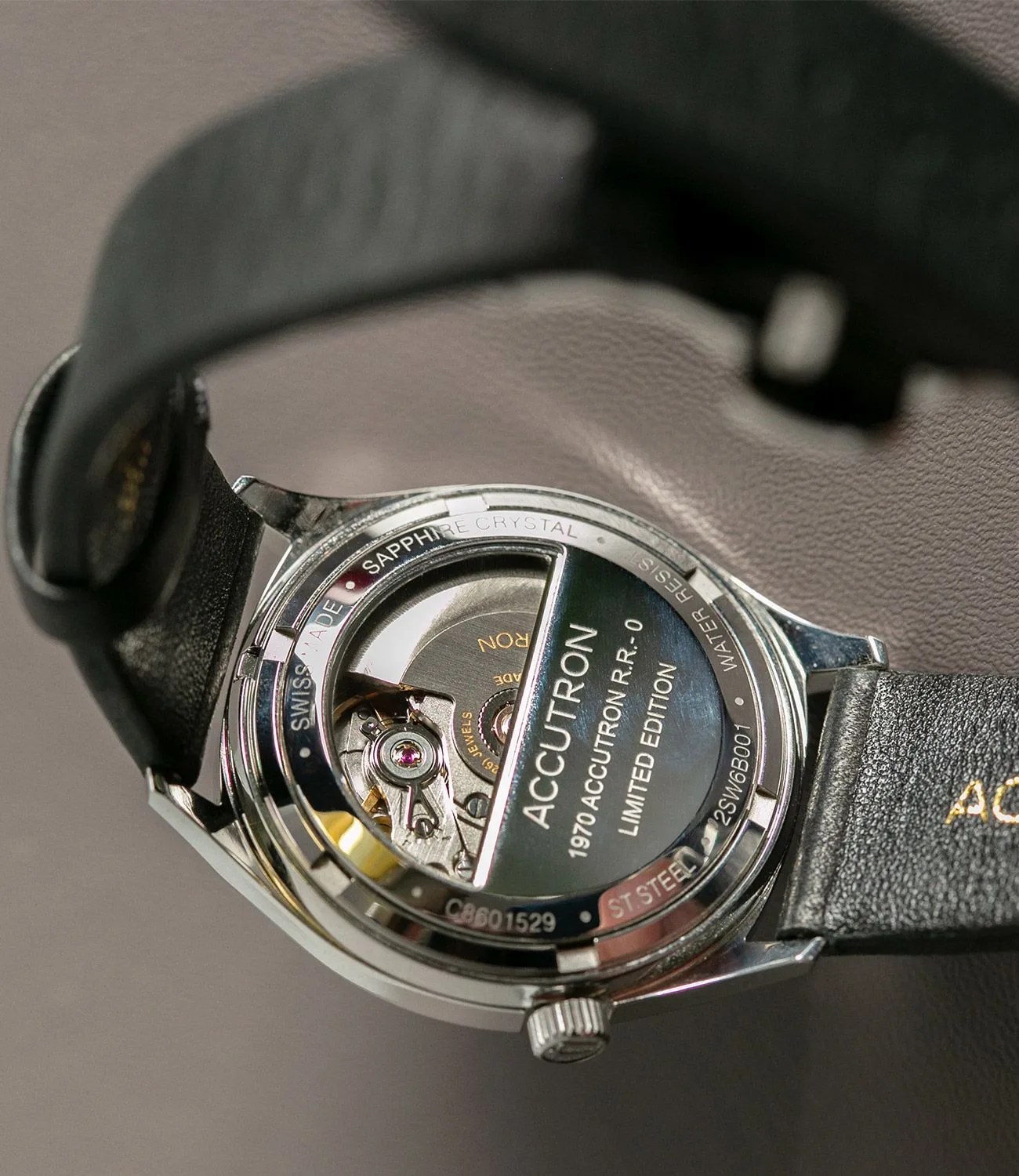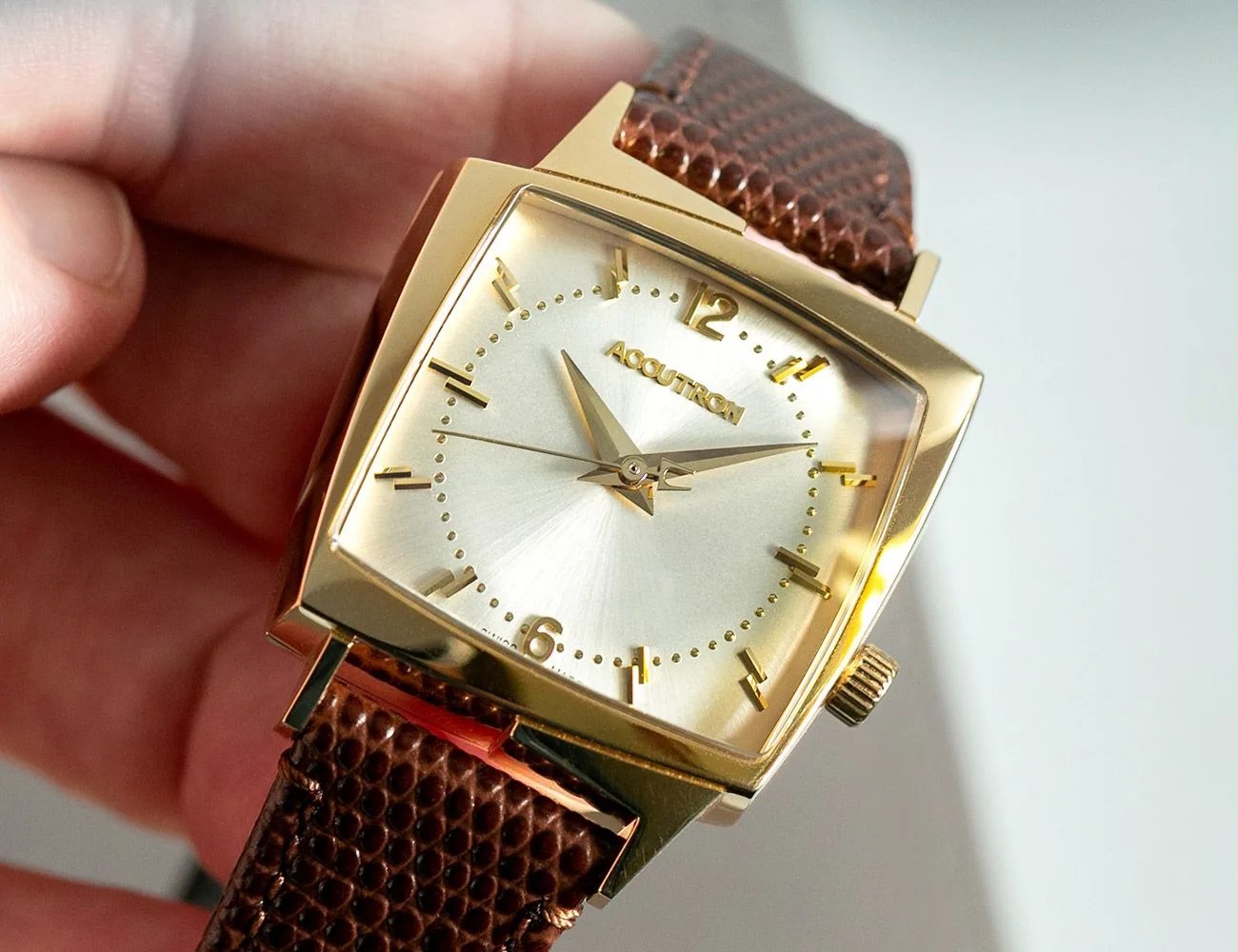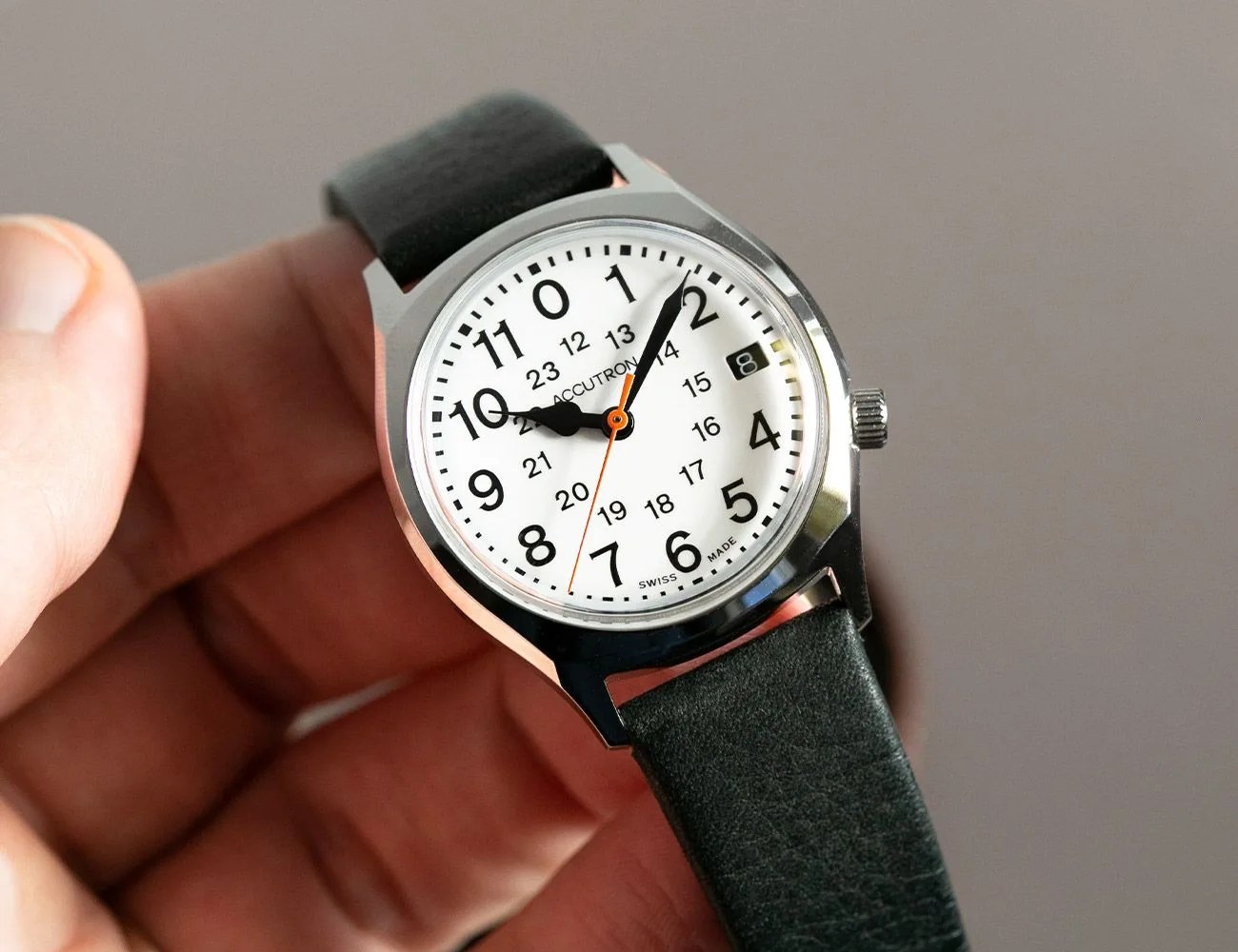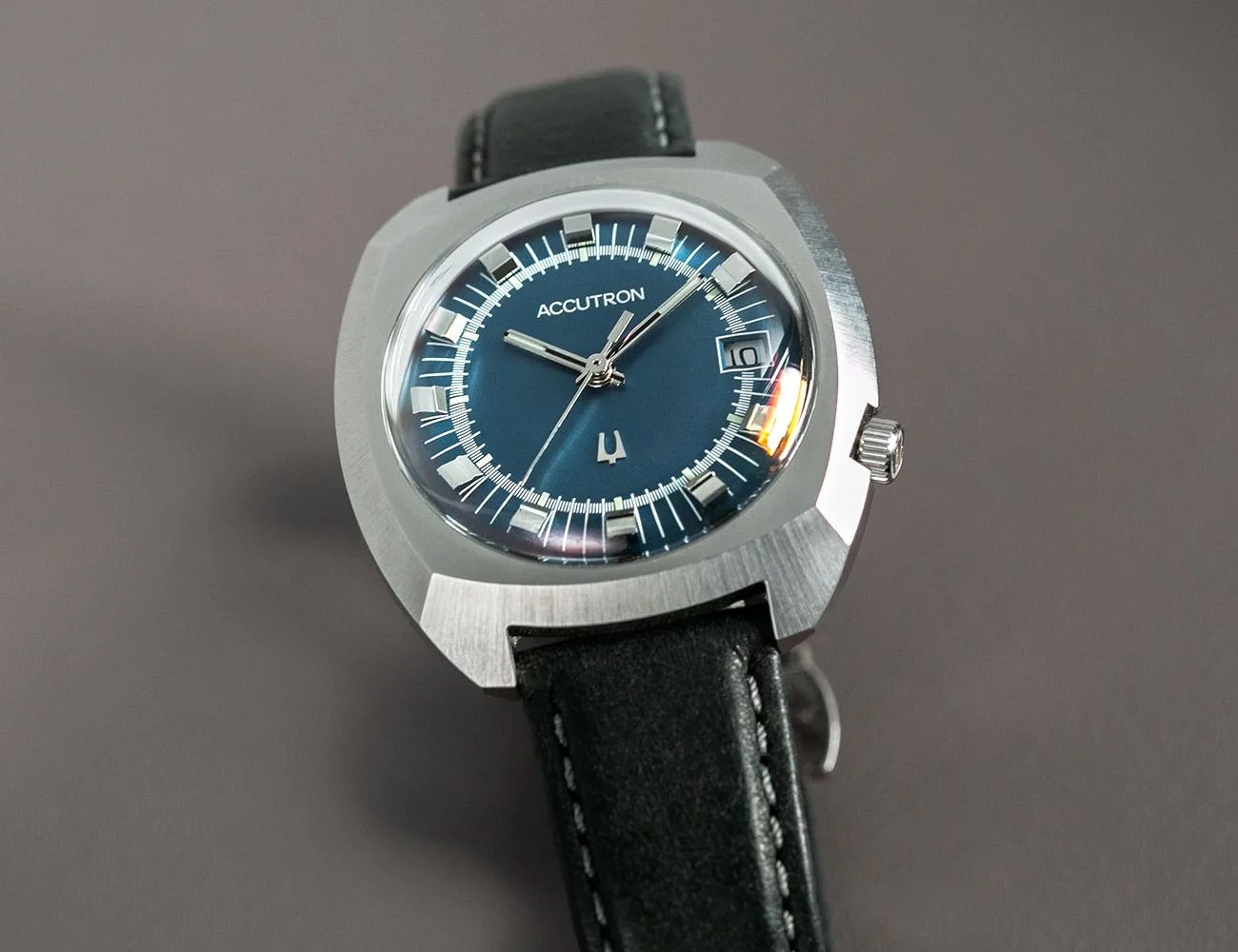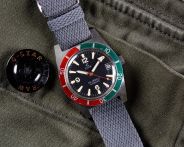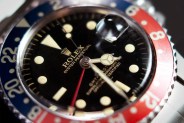Notable
The Accutron Legacy collection consists of eight models (some with a couple variants for a total of 12), faithfully recreating watch designs from the 1960s or ’70s. That might sound like a familiar formula in today’s atmosphere of vintage-watch-reissue mania, but these are unusual: they’re the types of designs that are overlooked by the vast majority of brands that comb their back catalogs for watches with modern mass appeal (think military watches, dive watches, etc.). In other words, most brands simply don’t have the balls to reissue such polarizing designs.
Most importantly, the Accutron Legacy watches aren’t just strikingly offbeat, but beautifully and lovingly rendered. The collection’s prices place them comfortably above entry-level automatic watches, but you can expect quality construction, materials and details at least commensurate with their price points.
Who It’s For
You’re likely going to find the Accutron Legacy watches to be either some of the coolest or some of the ugliest watches you’ve seen recently, as the sizes, shapes and generally unusual designs make them inevitably niche and polarizing. Average consumers might find them attractive and fashionable, but most buyers will probably be collectors who appreciate the unique looks as much as the brand’s history. These are meant for vintage enthusiasts — and those with funky tastes, at that.
Alternatives
Accutron does a particularly nice job of recreating the quirky side of midcentury watch design, but they’re not the only brand doing so. Hamilton’s Ventura ($845) is another such watch that, like Accutron, had a significant role in early electric wristwatches. Rado also stands out among modern brands for resolutely sticking to its guns and offering a modern version of its historic DiaStar watch now called the Rado Original ($750). There are certainly more still, but your best alternative might be actual vintage watches which, if you dig sizes and styles such as this, will offer lots of value.
Review
The 1950s, ’60s and ’70s gave us many watch designs that are still (or again) relevant today and are as compelling as ever (or more so). They look good as vintage watches and continue to inform modern design — but there was so much more that that age of experimentation produced. Anyone who’s spent time rummaging around the internet’s version of the vintage watch bargain bin has surely come across the forgotten B-sides of watches.
Not everyone is going to want to wear triangular, trapezoidal or other manner of what-the-heck watches. It takes a certain kind of enthusiast to enjoy books like Mitch Greenblatt’s Retro Watches and press “like” on every single post from Instagram accounts like @unwindintime and @utdesign. I’m exactly that kind of enthusiast who seeks out the weird and wonderful, and considers the Accutron Legacy watches to be among them.
